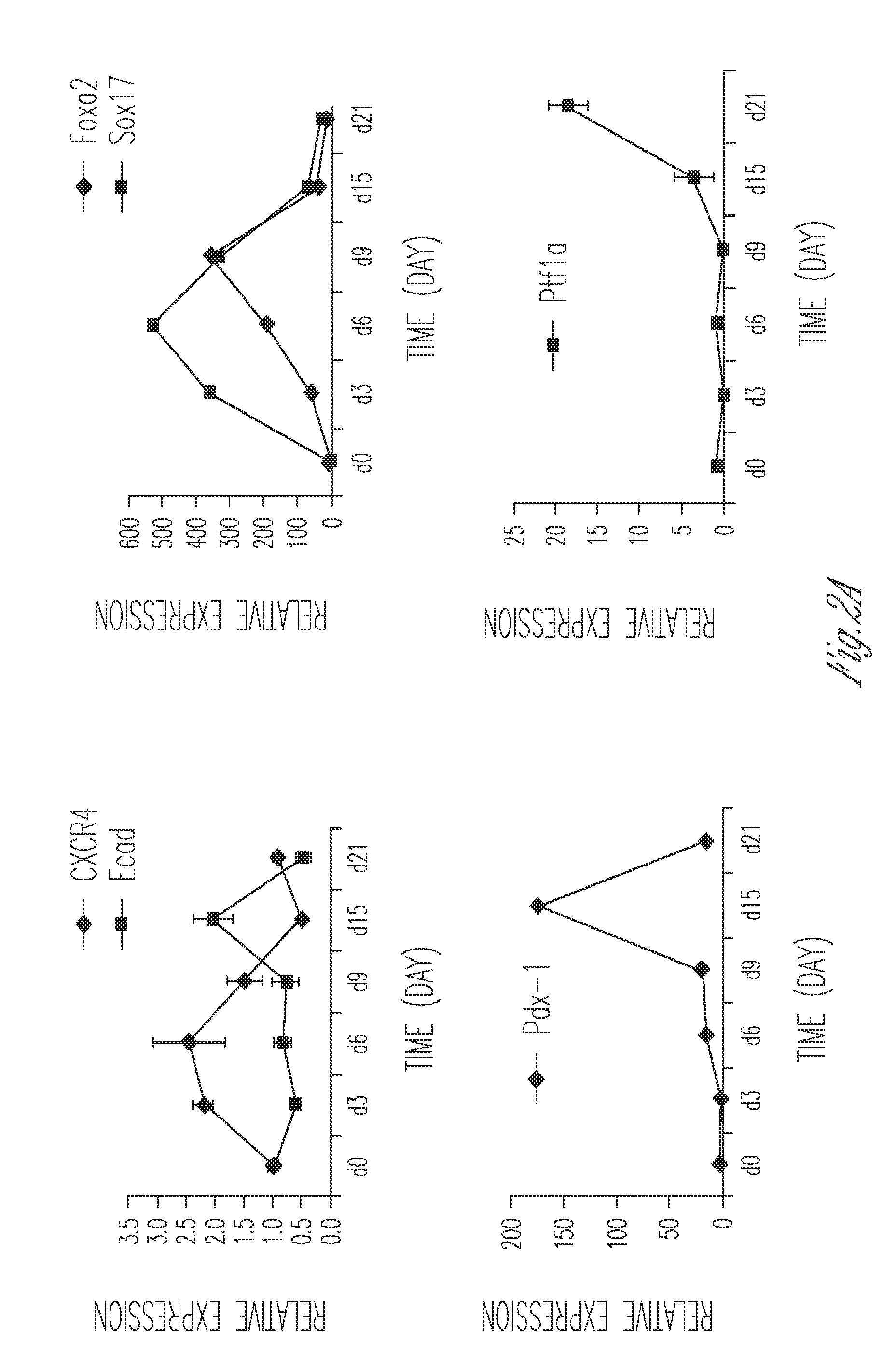Production of insulin producing cells
- Summary
- Abstract
- Description
- Claims
- Application Information
AI Technical Summary
Benefits of technology
Problems solved by technology
Method used
Image
Examples
example 1
Differentiation of Stem Cells to Pancreatic Cells
Materials and Methods
[0105]Lentivirus production: Each recombinant lentivirus expressing human Oct4, Sox2, Nanog, and Lin28 was generated by transfecting the constructors (Addgene, 16579, 16577, 16578, 16580) together with packaging plasmid pΔNRF and MD.G into 293FT cells. Briefly, 4.5×106 293FT cells were seeded using DMEM medium supplemented with 10% FBS in 15 cm plates. The transfection was conducted the next day using a calcium-phosphate-mediated method. Twenty hours after transfection, the medium was changed to DMEM with 2% FBS. Viral supernatants were harvested at 24 and 48 hours post transfection and concentrated by ultracentrifugation at 22,000 rpm for 2 hours.
[0106]Derivation of iPS cell lines: 1.25×105 neonatal human dermal fibroblast (NHDF, Lonza) cells were seeded on a gelatin coated 6-well plate the day before lentiviral transduction in growth medium containing high-glucose DMEM, 10% FBS, 1×NEAA. A mixture of 4 different ...
example ii
Bioreactor Cultured Human iPS Cell Derived Pancreatic Progenitors Enhance Diabetic Mice Survival
Materials and Methods
[0127]Cell culture: iPS cell lines were cultured in iPS medium (DMEM / F12 medium containing 20% knockout serum replacement, 0.1 mM nonessential amino acids, L-glutamine, 0.1 mM β-mercaptoethanol and 100 ng / ml basic fibroblast growth factor). Cultures were maintained on irradiated primary (MEF) feeders and passaged enzymatically using 10 μg / ml collagenase IV (Invitrogen).
[0128]Directed differentiation: Directed differentiation was achieved using embryoid body (EB) formation (Embryoid Body (EB) culture is used to examine the differentiation potential of the embryonic stem (ES) cell line. The cells are grown using low-attachment dishes in the presence of complete growth medium. This process induces differentiation, permits suspension culture, and causes the cells to form aggregates). The differentiation was initiated by harvesting human iPS colonies using collagenase and ...
PUM
 Login to View More
Login to View More Abstract
Description
Claims
Application Information
 Login to View More
Login to View More - R&D
- Intellectual Property
- Life Sciences
- Materials
- Tech Scout
- Unparalleled Data Quality
- Higher Quality Content
- 60% Fewer Hallucinations
Browse by: Latest US Patents, China's latest patents, Technical Efficacy Thesaurus, Application Domain, Technology Topic, Popular Technical Reports.
© 2025 PatSnap. All rights reserved.Legal|Privacy policy|Modern Slavery Act Transparency Statement|Sitemap|About US| Contact US: help@patsnap.com



